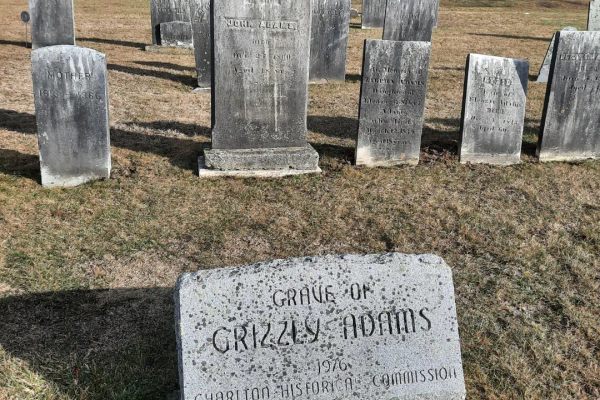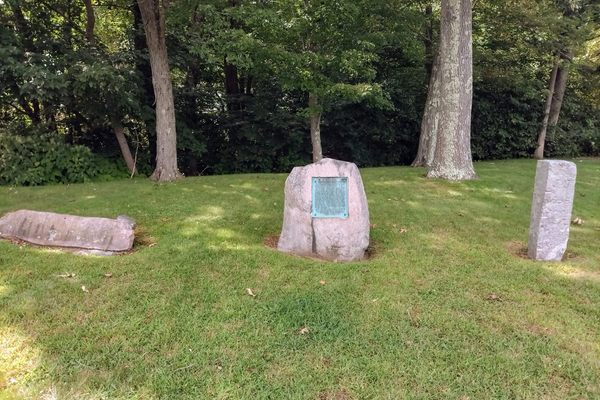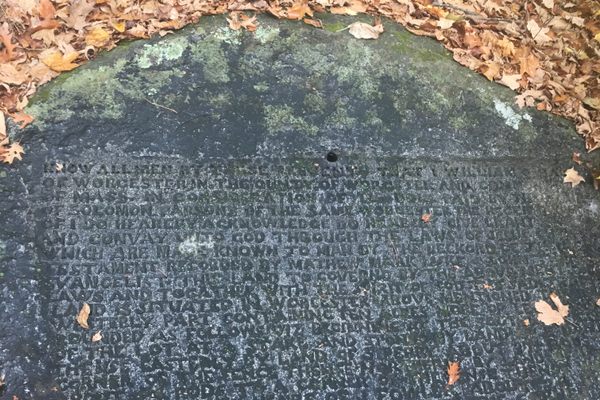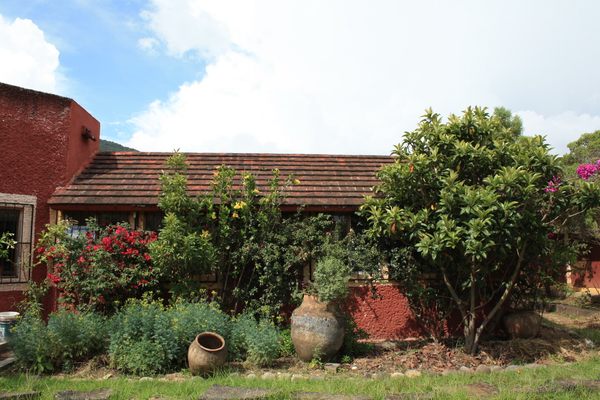AO Edited
Clara Barton Birthplace Museum
This historic home and museum celebrates the life story of the female founder of the American Red Cross.
South of U.S. Route 20, at the intersection of four roads in North Oxford, Massachusetts, is the Barton Center for Diabetes Education. Directly next to it is an old historical home. It may look like the many others throughout the area, but the name of the center hints that this is no ordinary house. The humble abode served as the birthplace of the founder of the American Red Cross, Clara Barton, one of the most influential women of the 19th century.
Clara Barton was born on Christmas Day, December 25, 1821, in Oxford, Massachusetts, to Stephen and Sarah Barton. Her father was a soldier who served under General Anthony Wayne during the Northwest Indian War, instilling a deep sense of patriotism and humanitarianism in his daughter.
In 1832, Clara had her first experience in medical care, around the age of 10, when her older brother David fell off a barn roof and sustained a severe head injury. Clara acted as his nurse, where she learned about delivering prescription medication and the practice of bloodletting. With the help of another doctor from a neighboring town, David eventually made a full recovery.
Clara was a shy person for much of her life. To get over her fears, her parents encouraged her to become a schoolteacher, which she did in 1839 at age 17. She served in schools around the Oxford area for about 11 years and, in 1852, moved to Bordentown, New Jersey, to help establish the state’s first free education school. She was very successful, but opposition from male educators who were against having women in senior positions led to her removal and demotion until she was driven to quit.
In 1854, she moved to Washington, D.C., to work as a clerk in the U.S. Patent Office. She was one of the first women allowed to work for the federal government and receive a salary equal to that of her male counterparts. However, many men were unhappy with her presence, and for three years, Barton endured much harassment, slander, and abuse from male employees and politicians who managed to have her position reduced to that of a copyist. During the administration of President James Buchanan, the new patent office commissioner was against women working for the federal government and greatly reduced her salary alongside that of other women working there. After receiving very little work, Clara returned to Massachusetts in 1857, only to return to Washington, D.C., in 1860 after a new commissioner arrived.
On April 19, 1861, the Baltimore Riot erupted, leading to the first bloodshed of the American Civil War, which had broken out a week earlier. Members of the 6th Massachusetts Militia Regiment were on-site during the riot, sustaining numerous casualties, including four fatalities. The injured men were taken to the Capitol Building for treatment, where Barton volunteered and nursed about 40 men. She was joined by other women, and from that day forward, she dedicated herself fully to providing medical care for the Union war effort.
After the First Battle of Bull Run, she placed an advertisement in Massachusetts for supplies, and the response was overwhelming. She distributed supplies, cleaned hospitals, applied dressings, served food, wrote letters, read books, and talked to wounded soldiers through many battles, including Cedar Mountain, Second Bull Run, Antietam, and Fredericksburg.
In 1863, she accompanied her brother David to Port Royal, South Carolina, within the Sea Islands, where he had been appointed quartermaster in the Union Army. During her time in the South, Barton became acquainted with other prominent abolitionists and helped provide medical care to wounded Black soldiers of the 54th Massachusetts Infantry Regiment after the Battle of Fort Wagner. In 1864, Union General Benjamin Butler appointed Barton as the leading woman in charge of all hospitals under the command of the Army of the James in Virginia. Barton’s care and compassion throughout the war became well known, with many calling her the “Florence Nightingale of America” and the “Angel of the Battlefield.”
After the war, Barton worked with the War Department to help locate the remains of soldiers missing in action and, over the course of several years, managed to identify and give proper burials to almost 23,000 soldiers, providing closure to their families. Barton traveled across the country giving lectures about her wartime experiences and also met other activists such as Susan B. Anthony and Frederick Douglass. After spending much of her life in the U.S., Barton traveled to Europe and was introduced to the Red Cross while in Geneva, Switzerland, in 1869. When the Franco-Prussian War broke out in 1870, Barton once again provided medical care and received commendation from both the French and Germans.
When she returned to the United States, she worked to create an American equivalent of the Red Cross, but President Rutherford B. Hayes believed such an organization was unnecessary, as he thought the U.S. would never again face a major war. She succeeded with the administration of President James Garfield, using the argument that the new Red Cross would also provide disaster relief. However, after Garfield’s assassination, President Chester A. Arthur signed the Geneva Treaty, and the American Red Cross was formally established in 1881. Barton led the organization for over 20 years, responding to natural disasters around the country such as the Johnstown Flood of 1889 and the Galveston Hurricane of 1900, and traveling abroad to provide care during the Russian Famine of 1891-1892, the Spanish-American War of 1898, and responding to a humanitarian crisis in Ottoman-controlled Armenia during the Hamidian Massacres of the 1890s. Barton resigned from the Red Cross in 1904 at age 83 and died on April 12, 1912.
From humble beginnings as a shy child from rural Massachusetts to founding one of the largest humanitarian organizations in history, the Clara Barton Birthplace Museum celebrates all her life achievements, in which she not only saved countless lives but also significantly pioneered the fields of nursing and medicine.
In addition to her medical contributions, the story of Clara Barton represents the immense struggles and obstacles women of her time had to overcome in order to achieve recognition and respect in a male-dominated society. The museum has countless invaluable items from her life on display, including her personal writing desk from the Civil War, family artifacts, rare photographs, and much more.
Today, the American Red Cross has chapters in all 50 states and supports millions of people all over the world, providing care, compassion, and missions of mercy regardless of nationality, ethnicity, or religion. It has been doing so for over 140 years and will continue to dedicate itself to the good of humanity for many more years to come.
Know Before You Go
Throughout the summer from the last Friday in May to the last weekend in August, the museum is open Friday to Sunday from 10 a.m. to 4 p.m.. In September, it is only open on Saturdays from 10 a.m. to 4 p.m.. From October to the last Thursday of May, it is open by appointment only.
General admission for adults is $8 and the museum has a photography policy visitors are asked to read and respect. Parking can be found in the Barton Center for Diabetes Education located nearby.




























Follow us on Twitter to get the latest on the world's hidden wonders.
Like us on Facebook to get the latest on the world's hidden wonders.
Follow us on Twitter Like us on Facebook